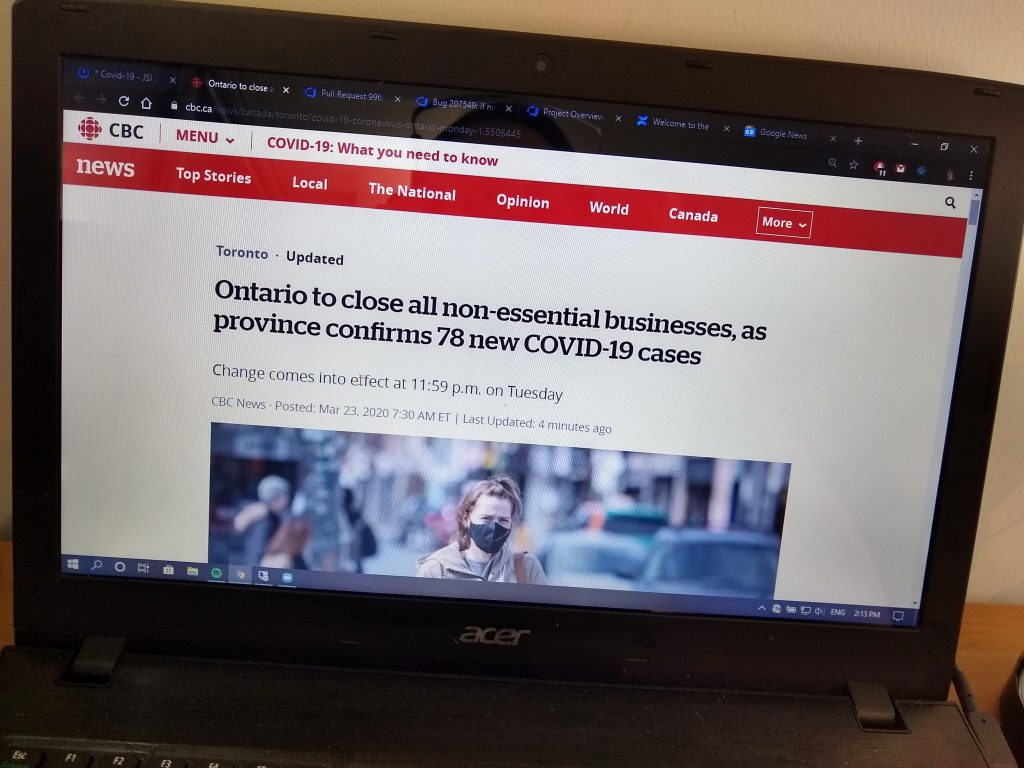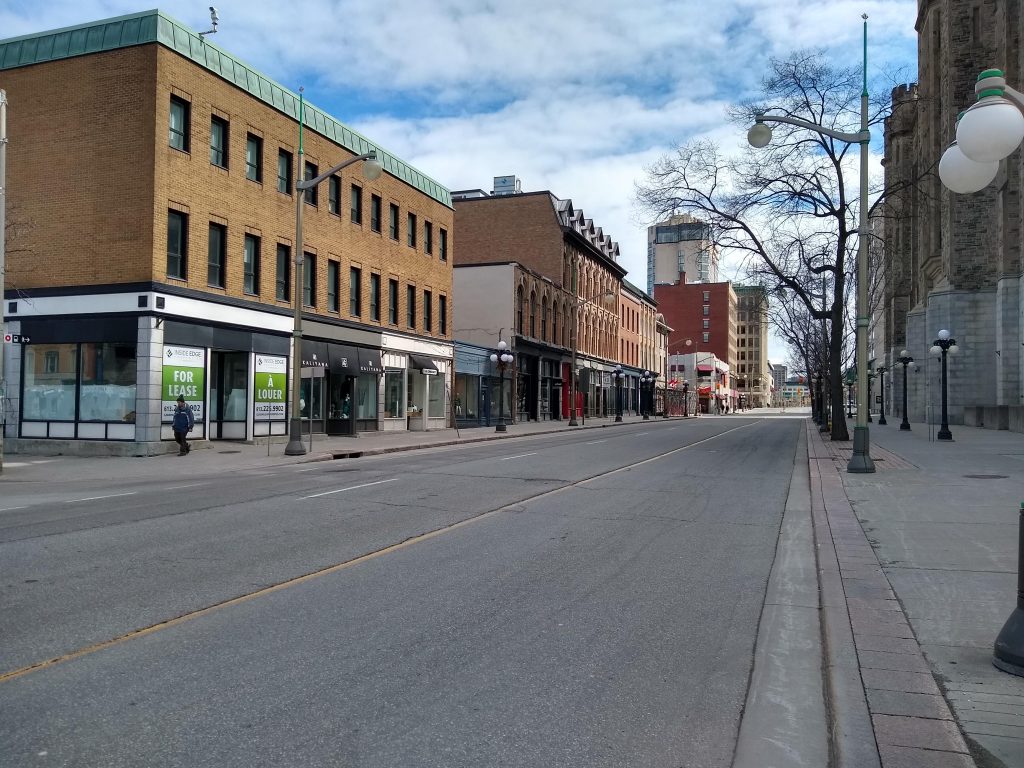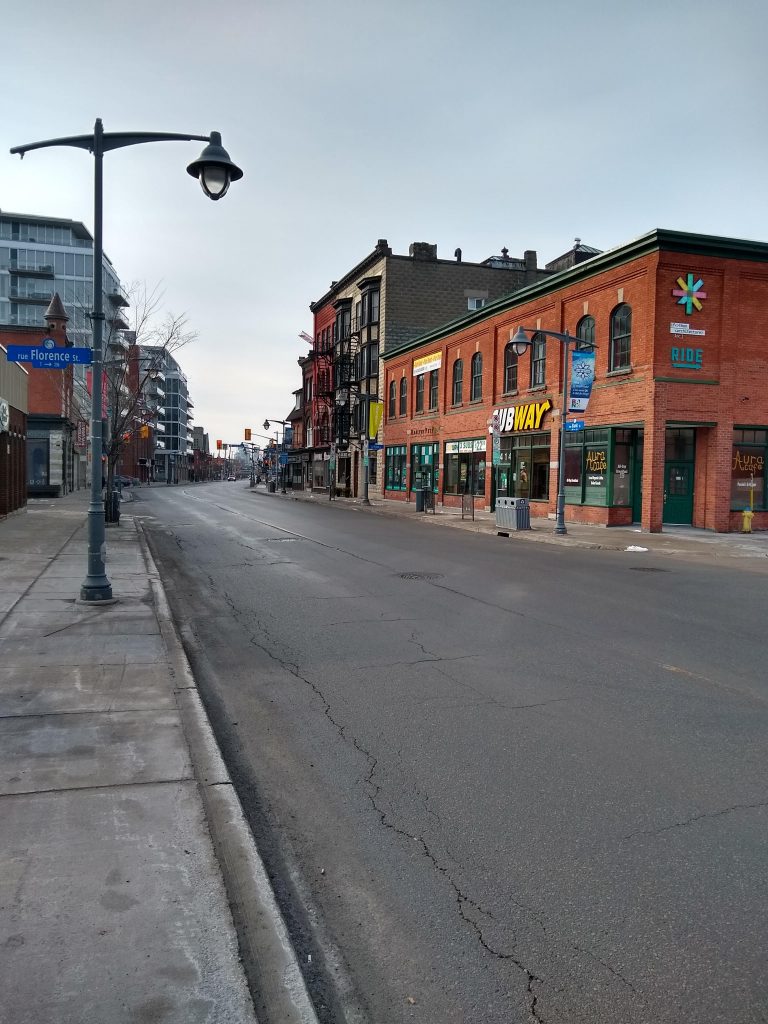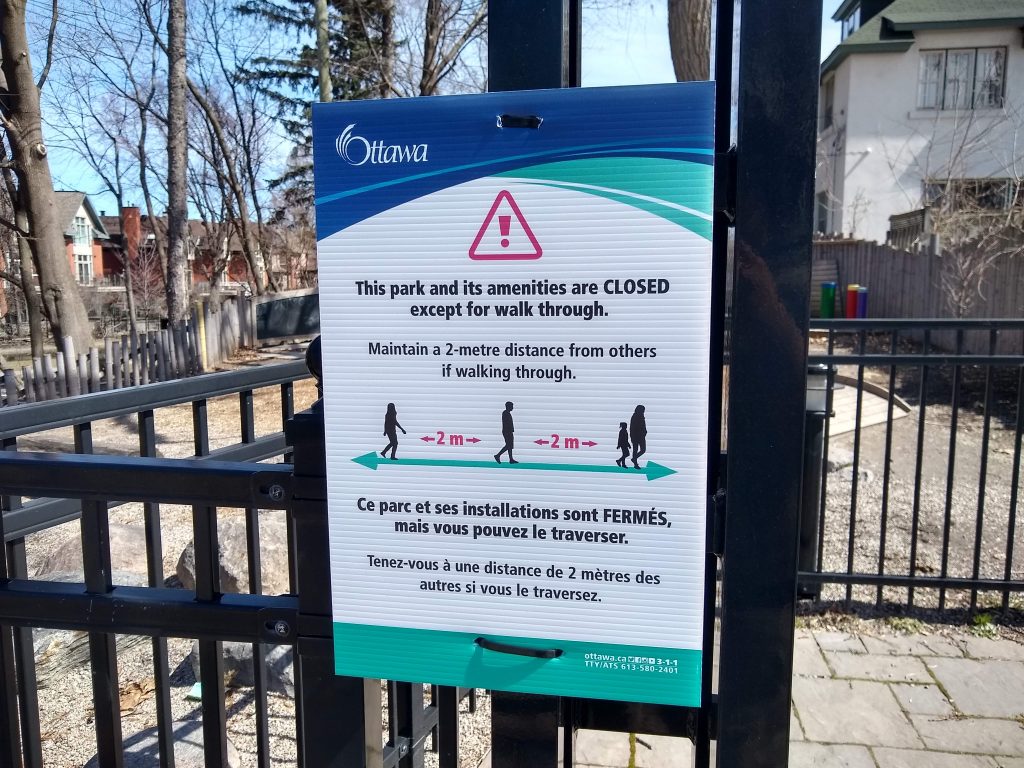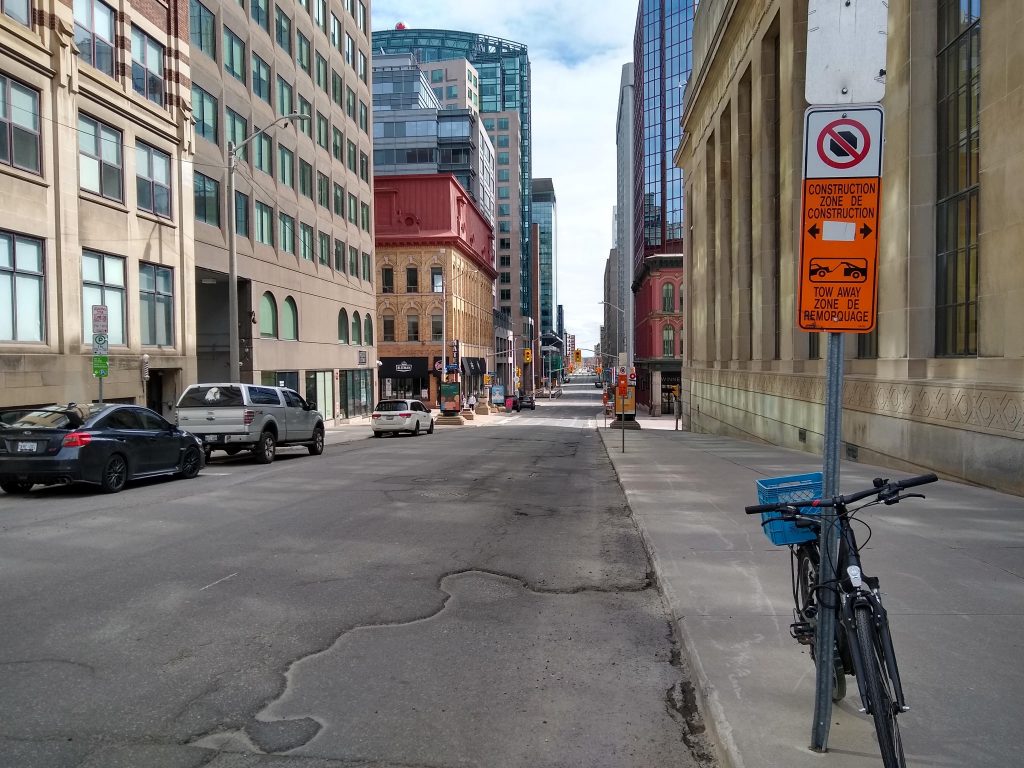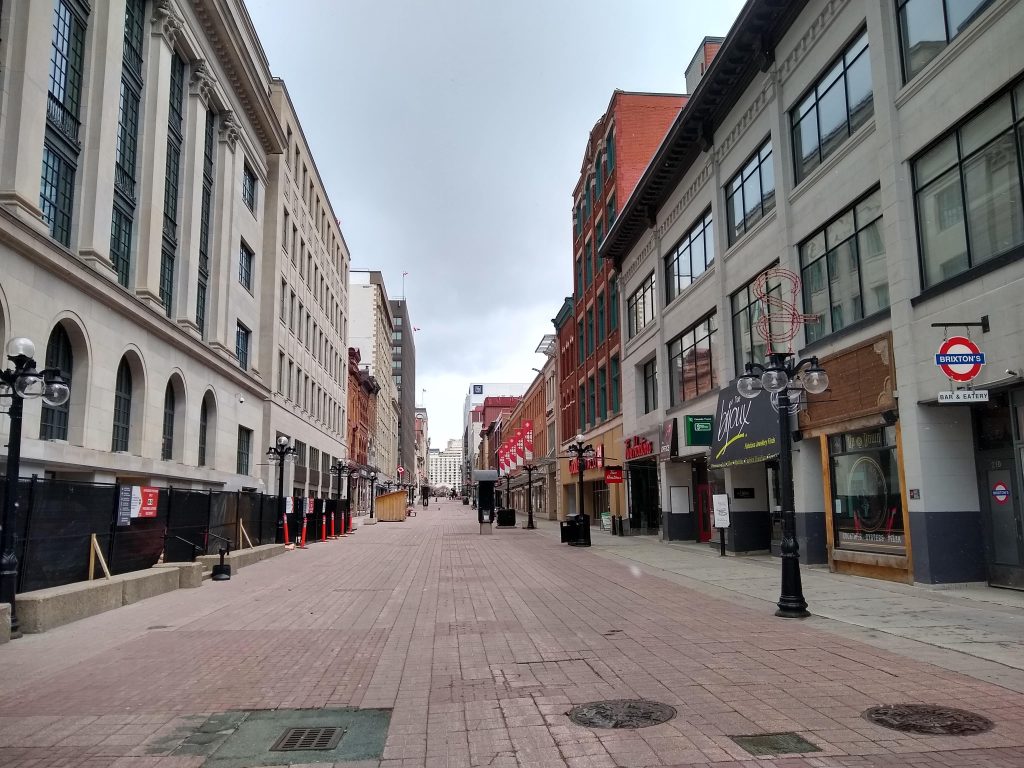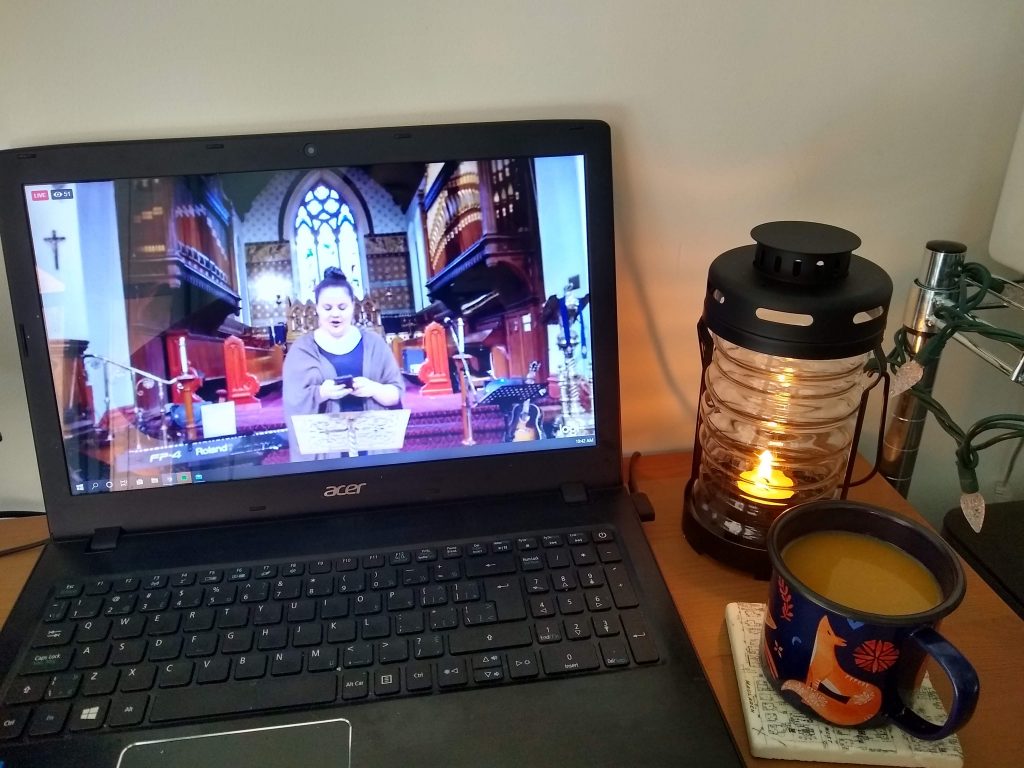Coronavirus disease 2019 (COVID-19) was declared a pandemic by the World Health Organization on the 11th of March 2020. This precipitated an unprecedented closure of the economy and public life around the world.
Perhaps most notably is how the city has been shut down.
There was initially a run on food and, oddly, toilet paper.
Grocery stores have since been stocked up again, but the businesses that remain open limit the number of people inside to help foster social distancing. This generates long line-ups to get groceries and beer.
Businesses shut down. At first the signage reflected the belief that the shut down would be on the order of a week or two. Eventually that changed, as the shutdown continued.
As the shutdown persisted, community spirit started to show.
Street art reflect the situation.
I’ve been working from home since mid-March. I go to church online. Tonight I watched a movie with my best bud, both of us watching it on our end in sync while video chatting. I went to a online queer dance party! I do some writing. I go on car rides exploring the city. I’ve been seeing my partner; the only person I’ve been within 2 meters of.
I’m really looking forward to this being over. I live in a tiny studio apartment and doesn’t get any daylight as I face an alley. Normally I deal with it by going to coffee shops and the building’s common areas, but those are closed.
As of the time of this writing, it’s not clear when things will get back to normal. Initially people thought it would take weeks. Now maybe June?
Among notable news these days is that Boris Johnson, the British Prime Minister, was transferred to intensive care and was given oxygen and that the Trump administration blocked shipments of much-needed respirators to Canada so that the US could have them. The city of Ottawa laid off 4,000 people, adding to the mass and sudden terminations experienced by service industry workers across the city. The restaurant sector laid off 800,000 Canadians in March, or “about two-thirds of the country’s entire food-service labour force”.
How will everyone who has lost their source of income survive? What about those who don’t qualify for government assistance, because they were already marginalized? Will this further accelerate the trends in Canada towards less job security, lower pay, fewer benefits, and shifting corporate risk to employees as was seen in the wake of the Great Recession? Will small businesses survive these government-enforced closures?



